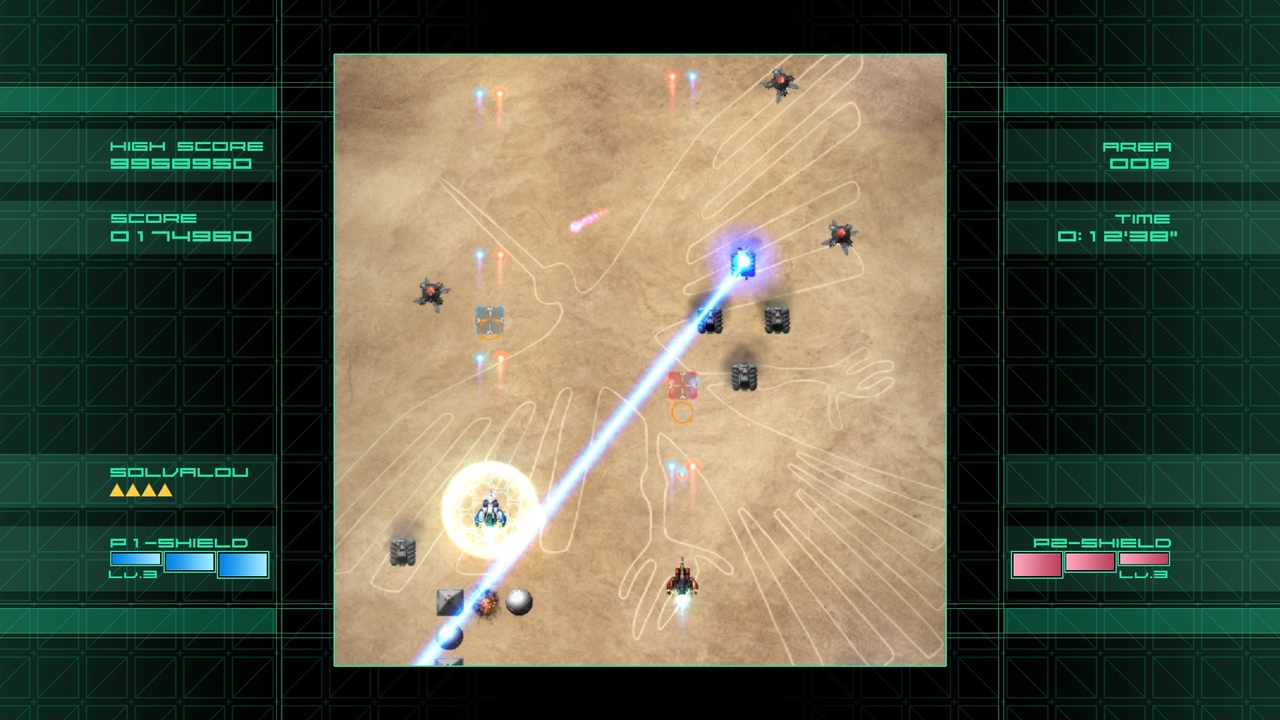

Many of the sprites were designed by Endō himself, although some were done by Hiroshi "Mr. The team used a method that involved giving each sprite different shades of gray, allowing sprites to display additional colors. Influenced by ray-tracing, Endō wanted the game's sprites to be high-quality and detailed, while also making sure they fit the limitations of the arcade board it ran on. The goal of the project was for the game to be inviting for newer players, and to become gradually more difficult as they became better at the game. Įndō wanted the game to have a consistent, detailed world with a story that didn't feel like a "tacked-on extra", instead being an integral part of the game. He learned programming on the job during production. (The original name may refer to the Vietnam-era Lockheed AH-56 Cheyenne advanced attack helicopter project.) After the development team was reshuffled and the project planner quit altogether, Endō became the head designer for the game. Early versions of the game were named Cheyenne and took place during the Vietnam War, with the player controlling a helicopter to shoot down enemies. He and a small team were assigned by Namco's marketing department to create a two-button scrolling shooter that could rival the success of Konami's arcade game Scramble (1981). Xevious was designed by Masanobu Endō, who joined Namco in April 1981 as a planner. Yellow "Special Flags" from Namco's own Rally-X are found in a semi-random section of the area. The Solvalou's bomb reticle flashes red when over one. Some parts of the game have hidden towers ("Sol Citadels"), which can be found by bombing specific parts of an area.

The player can either destroy all four blaster receptacles or the core in the center to defeat it. Ĭertain points in the game have a fight against the Andor Genesis mothership, which launch an endless stream of projectiles and explosive black spheres known as "Zakatos". Destroying flashing-red "Zolback" radars found on the ground will cause the game to switch back to easier enemies. Once the player does well at destroying a certain enemy type, a more advanced enemy type replaces it. The game becomes progressively more difficult as the player becomes more skilled. Certain areas have Nazca lines placed on the ground, some in the "condor" design. Areas are geographically distinct, with features such as forests, roads, rivers, and mechanical structures. Dying about 70% through starts the player at the beginning of the next. The game has a total of 16 connected areas, which loop back to the first after completing them all. A reticle in front of the ship shows where bombs will land. The Solvalou has two weapons: a zapper that fires projectiles at flying enemies and a blaster for bombing ground installations and vehicles.

The player controls a flying attack craft, the Solvalou, to destroy the Xevious forces plotting to take over Earth. Xevious is a vertically scrolling shooter. It was ported to home systems, followed by several sequels and spin-offs, and is included in many Namco compilations.Īpproaching a group of flying enemies and two ground targets It has been listed among the greatest video games of all time and one of the most influential games in the shoot 'em up genre, establishing the template for vertically scrolling shooters and inspiring games such as TwinBee and RayForce. The North American release paled in comparison, despite still selling 5,295 arcade units by the end of 1983.

It became an unprecedented success for Namco in Japan, with record-breaking sales figures making it the biggest game since Space Invaders. Xevious was praised for its detailed graphics, challenge, and originality. Several enemies and characters were made to pay homage to other popular science fiction works, including Star Wars, UFO, Alien, and Battlestar Galactica. Endō wanted the game to have a detailed, integral storyline and a comprehensive world, and to be welcoming for newer players. Created to rival the success of Scramble, it was originally themed around the Vietnam War and titled Cheyenne. The game was designed by Masanobu Endō and a small team. It runs on the Namco Galaga arcade system. The Solvalou has two weapons at its disposal: a zapper to destroy flying craft, and a blaster to bomb ground installations and enemies. Controlling the Solvalou starship, the player attacks Xevious forces before they destroy all of mankind. It was published in Japan and Europe by Namco and in North America by Atari, Inc. Xevious is a vertically scrolling shooter developed by Namco and released in arcades in 1982.


 0 kommentar(er)
0 kommentar(er)
